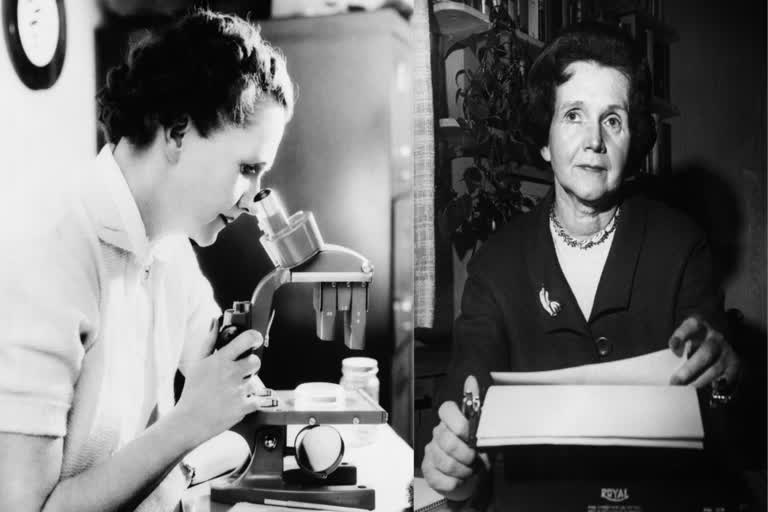Hyderabad:Rachel Carson was born on May 27, 1907, in Springdale, Pennsylvania, and grew up on a 65-acre farm. As a child, she spent her days exploring nature and writing. Her first work was published in a children's magazine when she was 10 years old.
Education
- Originally determined to be a writer, Carson changed her major from English to biology in college. In 1929, she graduated from the Pennsylvania College for Women (now Chatham College).
- She then went on to do graduate work at Johns Hopkins University (which was almost unheard of for women at the time) and had her fellowship at the U.S. Marine Laboratory in Woods Hole, Massachusetts. During her postgraduate studies, she taught at the Johns Hopkins summer school. Carson then began teaching at the University of Maryland for five years.
- After the five-year stint, Carson joined the Bureau of Fisheries in 1935. One of her first duties was to create a series of seven-minute radio programs about marine life. They were named "Romance Under the Waters."
- In 1936, she became one of only two women employed with the U.S. Fish and Wildlife Service Bureau at a professional level, according to the U.S. Fish & Wildlife Service, eventually becoming the editor-in-chief of the service's publications. She worked there until 1952.
- Carson also helped the government during World War II by investigating undersea sounds to assist the Navy in developing submarine detection. While working for the government, she penned many articles that were published by the Baltimore Sun.
Works and Achievements
- She also wrote her first book, "Under the Sea-Wind," published in 1941. It was a scientific book on marine life, but it was written so that the average person could understand.
- In 1951 she published her second book, "The Sea Around Us," according to Encyclopedia Britannica. This book became an immediate best-seller and made her a wealthy woman.
- The book won a National Book Award, stayed on The New York Times best-seller list for 81 weeks and ended up being translated into 32 languages. In 1955, Carson's third book, "Under the Sea," was published.
- Carson spent the 1950s researching the effects of pesticides on the food chain across the United States and Europe with the help of Shirley Briggs, editor of an Audubon Naturalist Society magazine called Atlantic Naturalist, and Clarence Cottam, another former Fish and Wildlife Service employee.
- This work culminated in her book "Silent Spring," which The New Yorker was published as a serial in 1962. It took her four years to write, according to Natural Resources Defense Council.
- The book earned her a presidential commission, giving her thoughts great credibility in the scientific world. Chemical companies tried to discredit Carson as a communist or hysterical woman. Despite their efforts, around 15 million viewers tuned in to the CBS Reports TV special on April 3, 1963, entitled "The Silent Spring of Rachel Carson."
- Carson was asked to testify before a congressional committee about the effects of pesticides. This led to the banning of DDT.
